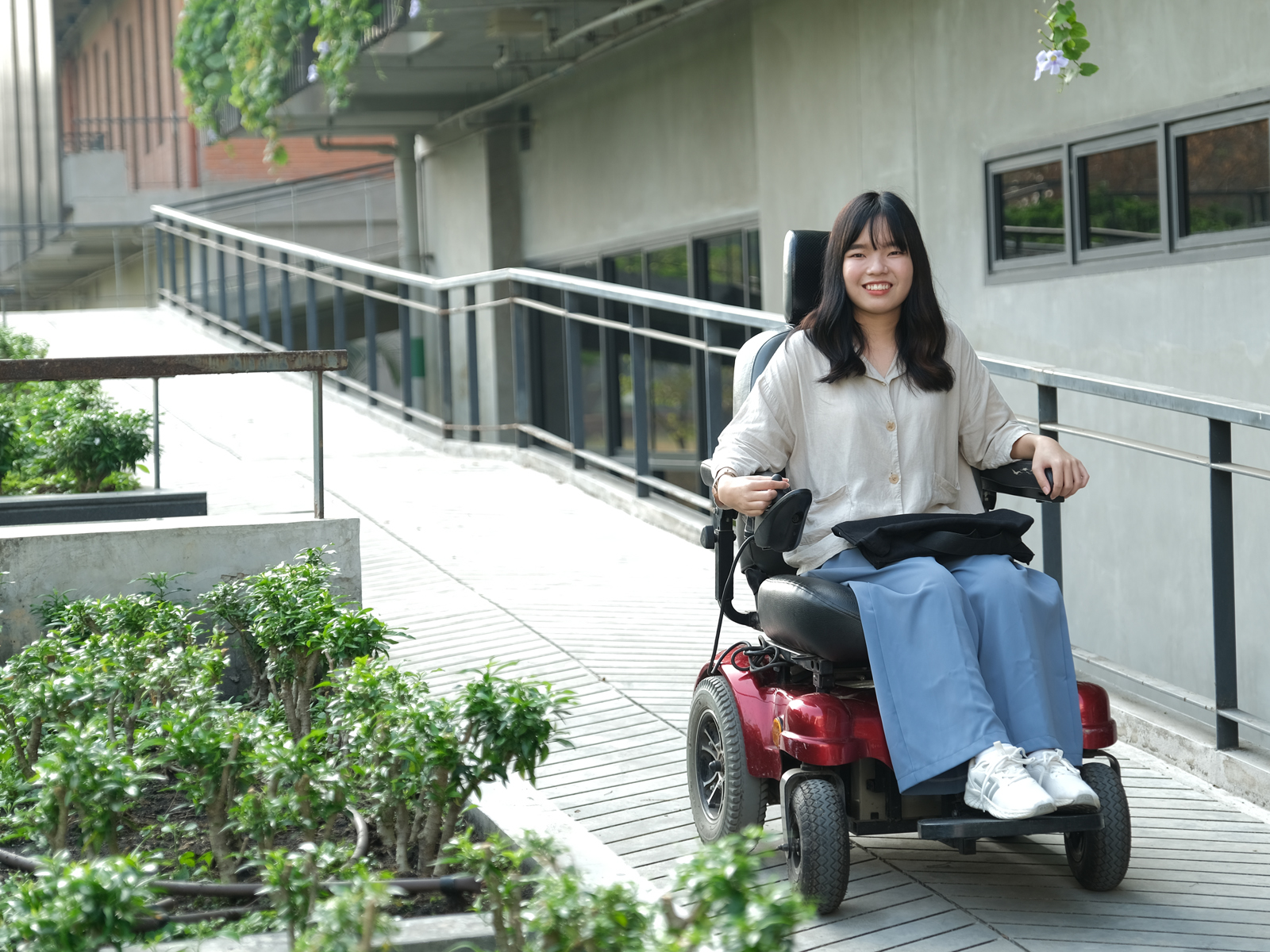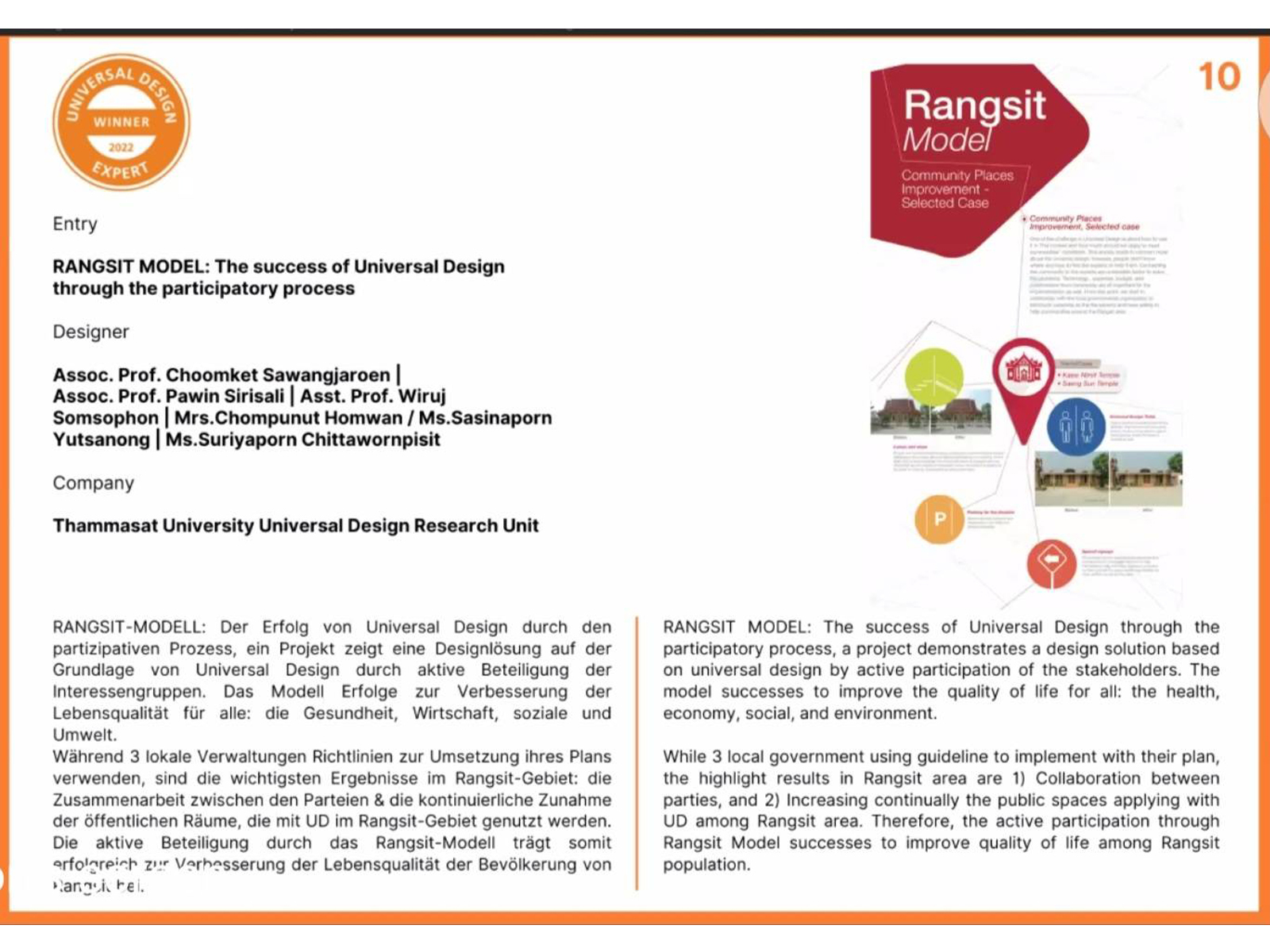Universal design drives development and innovation impact in Thailand
Researchers at Thammasat University are driving community and stakeholder involvement in universal design projects to promote real-world solutions

Universal design empowers academics to translate their research into real-world impact, says Choomket Sawangjaroen, associate professor of architecture and planning at Thammasat University in Thailand.
“Our mission is to be a university for the people, applying academic knowledge to societal needs, whether in problem-solving or development,” says Sawangjaroen, who is also a lecturer in landscape architecture. To achieve this, the university integrates universal design into its curricula and courses. Universal design involves designing products and environments so that they are accessible to as many people as possible, no matter their age or physical ability.

In 2015, Thammasat University established a universal design research unit and in 2018 it introduced a dedicated course, available to students across all faculties.
The unit developed the Rangsit Model, a framework for enhancing community quality of life through universal design. “The model incorporates a social service approach to enhance the quality of life for people with disabilities and the elderly,” Sawangjaroen says.
The model, which originated in 2007 as an academic community service project in the city of Rangsit, relies on community participation and stakeholder engagement. “Over 15 years, it has influenced the modification of 178 homes, adjustments in public spaces, and the adoption of relevant policies within the municipality,” Sawangjaroen says.
Its influence extends beyond Rangsit. In the last 15 years, the model has been used in 12 other municipalities, including Lat Sawai, Roi Et and Chachoengsao. “This engagement is driven by participatory processes, allowing community members to contribute to the design, implementation, use and evaluation of universal design projects, promoting sustainable impact,” Sawangjaroen says.

Thammasat University researchers have continued to develop other projects that improve the quality of life for Thai people. For example, housing for the elderly, people with disabilities and people with low incomes remains a challenge in Thailand. “The Dream Home for All project was developed to address this issue within the Thai context,” Sawangjaroen says.
Thammasat’s researchers developed the 100,000 UD House, with a starting price of about £2,300, which targets low-income families and individuals. The 100,000 UD House considers the need for accessible design and compliance with government renovation budgets.
There are three designs: the first is a compact house that maximises space, which is already being used by more than 5,000 homeowners; the second is a “knock-down” house, which has been designed for the elderly and can be erected next to relatives’ houses; and the third is a modular house, which is available in three sizes depending on the user’s needs.
“The house can be adapted to suit people’s lifestyles and health conditions,” Sawangjaroen says. The smaller model can be erected in a week.
The Dream House for All project has won several awards, including the gold award at the 2022 International Invention and Innovative Competition.
Sawangjaroen says the university’s universal design innovations have succeeded because they rely on collaboration with communities, local and international universities, and professional organisations. Going forward, the university will look to deepen these partnerships, which “will drive research, knowledge exchange and curriculum enhancements, aligned with universal design principles”.

